
kscarbel
-
Posts
1,114 -
Joined
-
Last visited
-
Days Won
8
Content Type
Profiles
Forums
Gallery
Events
Blogs
BMT Wiki
Collections
Store
Posts posted by kscarbel
-
-
The massive MB clutch pedal stirs memories. Those were hot trucks in the summer too. Overnite sure got their monies worth out of their MB city tractors.
The MB was unique in that the cab was produced by Orrville, not by Mack themselves (like all other Mack COEs), or by Sheller-Globe (R-U-DM).
-
In all fairness, it's hard to talk about MPG unless you have the exact same driver, same spec truck (rear axle ratios, ect.), trailer and load,....the list goes on and on. We all know that two different drivers in two actually identical trucks can deliver very different MPG results. If all factors are the same, the UltraShift Plus, Volvo I-Shift (and rebadged mDrive), and ZF AS Tronic AMTs will all deliver comparable results.
I don't like Allison's arrogant company culture, but I am curious as to how their new twin-countershaft TC-10 hybrid automatic transmission is going to perform. I say hybrid as they've combined a 10-speed twin-countershaft box with a torque-converter (the latter of course being their specialty).
-
The battery boxes (and covers) sold by Tidewater were not reproductions. They'd gotten permission from Mack to buy from the original supplier direct and in bulk (as they did on many B-model parts, to offer those affordable prices). For that reason, they came unpainted. But that was okay since we all wanted to prime and paint them ourselves anyway.
-
speakin of N models. anyone know who owns the Tidewater Mack N model and B68 that Matt Pfahl restored for them? i know they were both for sale with pretty high prices.
Were for sale for pretty high prices? My gosh, what do you consider a low price? Free? How much would expect these two ground-up restorations. professionally done by Matt Pfahl, to have been priced at?
-
 1
1
-
-
The latest UltraShift Plus AMTs perform well, with the "Low speed maneuverability for docking and trailering" and "Creep Mode for maneuvering with continous low speed control".
It was the predecessor to the current UltraShift Plus, called UltraShift DM3, that used a centrifugal type clutch which engaged via engine speed. At slow speeds when parking or backing into a trailer, the driver would have to increase engine speed to get clutch engagement resulting in a difficult to control vehicle speed.
However with UltraShift Plus, Eaton added an electric clutch actuator so now the clutch can be engaged at idle, which significantly improves slow speed maneuvering. Your experience would be very unusual for UltraShift Plus, but not unusual for the older UltraShift DM3.
Because the transmissions are actually quite different, Eaton should have come up with an all-new name so people don't confuse the new technology UltraShift Plus with the much different older model. UltraShift Plus performance should compare quite comparably with a Volvo I-Shift.
.
-
 1
1
-
-
I hear you, I really do. To each his own. But even the great ZF (thinking global market) went with a dual-countershaft design for their AMTs, moving away from the single-countershaft design of their manuals.
-
From the side, it reminds of a Dodge Bighorn.
-
Westport Group
650 Boulder Drive
Breinigsville (Upper Macungie), PA 18031
Phone: (610) 336-8900.
-
Rob is speaking of METALSA.
-
The comment on that link echoes my thoughts:
It's so unfortunate that the great Mack name will never be the same now that it's no longer headquartered in Allentown, PA. It's also unfortunate that Mack highway trucks are merely Volvo chassis and engine with a "Mack" looking hood and cab. I proudly worked for twenty years at the Mack Engineering Development and Test Center (now a museum) until forced to find new employment, as Volvo broke a promise and relocated all Engineering operations to Greensboro. Another American icon lost to history.
The sad reality as spoken by another former member of the Mack family. What Volvo has done to Mack Trucks, reduce a global icon to a mere shell of its former self, should be a crime. The only grateful people are the remaining US truckmakers who have lost a once respected competitor.
-
AMT's are a great option for a lot of customers. And ordinarily, I'd want to purchase a Mack pedigreed design AMT tranny. However, Volvo Group cancelled Mack's plans to offer an AMT version of the Maxitorque ES T300 triple-countershaft transmission, the world's most durable transmission, because they want to promote their own single-countershaft I-Shift AMT. (Swedish engineering is always superior - don't you know?)
My thought is, if I can't order a triple-countershaft Mack AMT, I will certainly order the double-countershaft Eaton UltraShift Plus over the single-countershaft Volvo I-Shift. There's no doubt in my mind that that Eaton's latest AMT range (UltraShift Plus) is more durable.
-
Always submitting requests for large and expensive experimental toys (few that ever see production), the U.S. Army in 1957 approached R.G. LeTourneau for an 8x8 version of the tank transporter.
Mack Trucks supplied all the axles and bogies to Letourneau, including triple-reduction front axles and double reduction rear axles (with a 9.02:1 final ratio).
Designated the XM376 (front unit) and XM377 (rear unit), they were designed to travel in one direction (unlike the previous Mack T8). The entire unit weighed 64 tons and was designed to carry a 50-ton tank. It was noted that maneuverability was terrible except in open fields and “the amount of money spent on the project must have been immense, and served no practical purpose.”
Each eight-wheel drive module was powered by a 560hp (@2800rpm) 1,195-cu.in. air-cooled Continental AOI-1195-5X horizontally opposed piston 8-cylinder engine connected to Allison CBT 5640-2X 4-speed automatic transmissions. Top speed was 35 mph.
The XM376/XM377 was sold as surplus in 1961.
-
Built in 1945, Mack Truck’s T8 Tank Transporter was certainly impressive, with front and rear four-wheel drive modules that were powered by two 17.8 liter (1,090 cu.in.) 240hp (@ 2,000rpm) Hall-Scott 441 engines. It could carry a 41-ton payload cross-country with a gross weight of 86-tons. Tires were size 21.00-29.
A more powerful version, the T8E1, was powered by two all-aluminum 18-liter 500hp Ford GAA tank engines featuring dual overhead camshafts and 4 valves per cylinder with a top speed of 31 mph. (32-valve DOHC V-8 - sounds more like a modern engine rather than one produced in 1945).
In 1950, the T8E1 was adapted to carry the army’s 280mm atomic gun carriage (it fired atomic shells), resulting in the Mack T9. Length increased from 60 to 71 feet.-
 1
1
-
-
-
Mack sold some 6x6 DM6116S tractors and dump trucks to the U.S. Air Force in 1968 with 180hp END673E engines, 18-speed TRQ7220 quadruplex transmissions and 18.00x22.5 super single tires.
Mack also sold some DM800's to the U.S. Navy (with Cummins NTC335s and NTC350s).
Many years later, Mack sold some DM492S's to the Air Force (Caterpillar 3208s and Allison MT643s - not a Mack).
All of these were basically civilian spec trucks simply painted army drab, not tactical trucks like the M123/125 series.-
 2
2
-
-
But that's not a mil-spec Mack. It's just a Pinnacle with army paint and an armored cab. It has no cross-country capability. Mack has yet to get back into the tactical vehicle arena and compete with Oshkosh.
-
The Mack model RM6866RS 6 x 6 was produced by Mack Trucks Australia as the Truck, Cargo, Heavy, MC3. Three prototypes were produced in 1978 and after extensive trials an order was placed in 1981 for 906 units. These were delivered in 1985. In 1988, an additional 19 units were built which brought the grand total to 925 units in all configurations.
In 1993, an AUD8.77 million contract to upgrade 542 of these trucks was awarded to Mack Trucks Australia which included replacing the Mack camelback suspensions with Mack SA441W air suspensions. In 1994, the contract was expanded to the remainder of the Australian Army's Mack fleet.
The RM6866RS 6x6 heavy recovery vehicle (HRV) was developed by Mack Trucks Australia for the Australian Army and 64 units were ordered. The HRV has undergone major modifications from the standard Mack RM6866RS chassis to increase its capability, including increasing engine output from 285 hp up to 320 hp with peak torque now at 1,600 rpm. The transmission has been upgraded to an Eaton RTXF-14710B which gives a wider operating range for the loads required to be towed. The 'R' model cab has been substantially modified, with the rear cab wall having been removed and a crew cab bolted to the rear allowing additional seating for the recovery crew (two people). The complete cab set up has been placed on an air suspended sub-frame. A new integrated recovery unit has been mounted to the rear of the vehicle consisting of material handling equipment (MHE), two retrieval winches with fairlead systems, a lift towing system, and stowage facilities.
-
- Popular Post
- Popular Post
While Mack’s U.S. operations have had an on-again, off-again history of doing business with the US military (an incredible direct-sales absence from 1965 thru 2004), the company’s Australian unit was extremely successful in cooperating with the Australian Defense Force (ADF). That Mack Australia has maintained a non-stop relationship with the Australian Defense Force since 1981 that is truly impressive.
So strong is the partnership and the Australian military’s satisfaction with its Mack trucks that it awarded Mack Australia a US$7 million contract to refurbish 158 of its RM6866RS 6x6 trucks in 2004, part of the military’s original RM fleet of 940 units purchased in 1981. Since the RM is regrettably no longer in production, the ADF elected to rebuild them rather than replace them with another brand truck. That speaks volumes about the ADF’s devotion to their dependable 6x6 Macks.
Whether on the fields of Afghanistan or the beaches of East Timor, military-spec model RM 6x6 Mack trucks of the Australian Defense Force are on the job day-in and day-out.-
 3
3
-
By 1973, the U.S. Army’s 10-ton Mack M123 fleet was aging. A new and larger replacement was desired. After testing two prototypes from Kenworth (XM523 and XM523E1), the army tried the International Harvester XM523E2 (based on their model 8066 off-highway truck) as an interim solution, but encountered excessive maintenance problems. It was removed from service after just 5 years.
Mack then put forth several proposals including the 25-ton F-897ST.
Engine: 375hp ENDT866 V-8
Transmission: 12-speed TRTXL107
Wheelbase: 178 inches
Tires: 14.00x24
Curb Weight: 32,970 pounds
GVW: 102,000 pounds
Winch: Braden 60,000 pound mounted behind cab
The army also tested a 6x6 F-8976SX (as sold to the Moroccan military) and a 6x6 DM-8976SX, both equipped with the same ENDT866 powertrains.
Although the U.S. Army was completely satisfied with the cross-country ability of the manual transmission-equipped 10-ton M123 while pulling M-60 tank ladened trailers, the army felt their test drivers could not shift gears fast enough in the prototype 25-ton Mack tractors under the same conditions. A decision was made to transition to automatic transmissions. However, rather than having Mack resubmit proposals with Allison automatic transmissions, the army gave the business to Oshkosh with their Allison CLBT-750 equipped 25-ton 8x6 M911 (commercial known as the model J-2065).-
 2
2
-
-
Mack has not produced a true military spec truck since the 10-ton M123 tractor and sister M125 cargo truck.
Mack produced approximately 4,000 10-ton M123 prime-movers and 550 of the M125 cargo body version.
Owing to the truck’s impressive ability, and for lack of finding anything better, the army used its M123’s for decades. Of the two most produced variations, the original M123s were built from 1955-1957, while later versions from 1965-1969 were powered by Cummins V-8 diesels.
The earlier M123s were unique in that Mack decided to use LeRoi (famous for air compressors) model T-H844 V-8 gasoline engines. Because the LeRoi-powered units made a distinctive muscular throbbing sound owing to their unusual cylinder head design, soldiers knew by the sound what truck was coming around the corner. The truck’s tall 14:00-24 tires also gave the Mack a massive appearance unlike any other M-series military truck.- M123 FSN 2320-395-1875. Dual rear winches. LeRoi T-H844 V8 Gas engine.
- M123E2 FSN 2320-879-6177. Dual rear winches, Cummins V8-300 diesel.
- M123C FSN 2320-294-9552. Single rear winch. Cummins V8-300 diesel.
- M123D FSN 2320-542-2509. Dual rear winches. Cummins V8-300 diesel.
- M123A1C FSN 2320-226-6081. Single rear winch, 36,000lb lift crane. Cummins V8-300 diesel.
.
-
Nothing's impossible, however putting a Ross gear on a B-77 frame would be very difficult from a sound engineering standpoint.
Perhaps a better idea would be to contact these people for replacement Air-O-Matic power steering parts.
http://www.maradyne....c_overview.html
http://www.maradyne.com/air-o-matic/pdf/AOM%20Installation%20Bulletin%2082805.pdf
-
Breeding negativity? The title of this thread is "Is Volvo Good Or Bad For Mack Trucks?" I don't feel that Volvo is good for Mack, and I am expressing why I feel that way. Just now, I see that 73.81 percent of the viewers on this forum also feel that Volvo is bad for Mack.
If you discuss the matter with any longtime Mack employee, they will agree with me that what Volvo has done, reduce a global icon and American legend to a mere shell of its former self, should be a crime.
Is MackLegacy a Volvo PR department employee assigned to monitor popular Mack forums and counter any negative comments? Quite possibly."A Mack truck ran over his/her favorite dog as a child."
Sir, if you are unable communicate on a higher plane than that, perhaps you should not be on this forum. Just as well, since you seem to know very little about the company (But I understand, since many Volvo Truck people are not career truck people as Mack employees traditionally were).
My posts certainly reflect my sincere feeling and long time dedication to Mack Trucks. My posts are also filled with a great deal of facts. -
Mack transmissions feature "Tetrapoid gears" which are stronger, longer-lived and quieter than those of conventionaldesign (as well as invalute transmission-shaft splines for greater stamina).
-
You are absolutely right that in the small picture, the salaries of US workers employed at North American Volvo/Mack and Freightliner plants, which fall under Net Expenses, do indeed help to support local US economies.
I'm thrilled to hear you mention that Mack Trucks was once under Renault. But the difference between Mack Trucks under Renault versus Volvo is like night and day. Ask anyone that was a Mack Trucks employee at the time.
When Renault became involved with Mack Trucks in 1981, Renault understood the immense value of the Mack Truck Company. Rather than take apart an ill global icon, Renault under the superb leadership of Elios Pascual invested heavily in Mack Trucks and brought the company back to greatness. Both Renault and Mack Truck employees couldn't have been more pleased with the outcome. Mack was back!
Unlike Volvo, Renault realized the value of Mack and invested huge sums of money to rebuild the company. Naturally Mack employees were at first very concerned about what would transpire under Renault. But Mack employees quickly observed that Renault was dedicated to rebuilding the Mack Company (rather than reduce to a mere shell of its former self as Volvo has). Thus, Renault and their appointed Mack President Elios Pascual quickly earned the respect of Mack employees. Elios Pascual revived the Mack team spirit originally inspired by legendary Mack Trucks President Zenon C.R. Hansen. If you look at the numbers, Mack performed extremely well under Renault. Only after Mack was solidly back on its feet again did Renault slowly begin to repay itself the money it had invested in Mack's recovery.
Under Volvo, the Mack Truck Company has been eliminated! Volvo just wanted the Mack logo. Step by step, Volvo has eliminated all that the Mack Truck Company was (The closure of Mack Truck’s world headquarters in Allentown and transfer of all functions to Volvo Truck Headquarters in Greensboro, North Carolina, was the fatal blow to the Mack brand. Any remark to the contrary is a distortion of the fact).
1) Mack Trucks' world headquarters has been closed.
2) Mack Trucks' Hagerstown powertrain plant has become a Volvo powertrain plant.
3) Mack Truck's Engineering Development and Test Center has been closed (a 62-acre facility dedicated by Mack Trucks to pushing the engineering envelope and perfecting Mack products. Here, prior to Volvo’s closure of this facility vastly superior to Volvo’s facility in North Carolina, Mack vehicles underwent a battery of torture tests. Cabs bounced for months at a time over simulated bumps. One-ton wrecking balls crashed into door frames. A brutal off-road test track (far, far superior to Volvos – ask any Mack R&D person) ensured Mack trucks lived up to impossibly high standards)
Legendary Mack Trucks President Zenon C.R. Hansen legitimately made Allentown, Pennsylvania "The Truck Capital of the World", and inspired an incredible spirit and pride within Mack people that, I feel, remains unmatched to this day. For employees of other U.S. truckmakers, their work was just a job. But under Zenon C.R. Hansen and acting President Elios Pascual (under Renault), Mack employees were a special breed. Employment at Mack Trucks was a unique career and rewarding way of life. You knew that you belonged to something really special, and it showed in your confidence.
As they say, "Mack means a lot of things to a lot of people". No matter where a Mack employee went, whether it be world headquarters, Macungie, a parts distribution center (PDC), factory branch or dealer, he or she always felt at home within a special family. You were never allowed to feel like a stranger. Anyone that entered Mack's world headquarters knows what I mean. In the way the receptionist would warmly greet you and present you with a Mack Bulldog lapel pin, you immediately knew Mack was like no other truckmaker.
Volvo has demonstrated again and again since 2001 that they are completely oblivious to the very meaning of Mack Trucks and the immense value this company represents when it is allowed to flourish in its own right.
(I had no problem with Volvo reducing White and GMC to nothing, because those two brands realistically were already nothing)
But Mack Trucks is a totally different situation entirely. The strength of the Mack brand, its incredible employees and the company's legendary engineering is immeasurable. It is nothing less than amazing how ignorant Volvo Group's business strategy is relating to Mack Trucks.
Mack Trucks, unlike any other truckmaker throughout U.S. history, has a soul. Mack is not a brand. Mack is a legend. Mack is a family, of employees and customers. For customers, Mack is a feeling. For Mack employees everywhere, Mack is a way of life. Nobody ever said "built like a Freightliner, or International". No other U.S. truck brand ever became a household word.
Under sound independent management, Mack Trucks could benefit Volvo Group far more than a decapitated Mack brand which now is no more than a Mack emblem on a disposable low-quality truck built around Volvo components. Mack customers are alienated by this product.
Mack customers want to purchase a "real" Mack truck, with genuine Mack "pedigreed" components that incorporate the engineering that Mack Trucks is legendary for.
In a tradition set by legendary Mack engineer Alfred Masury*, Mack had always set itself apart from other US truckmakers as an integrated truckmaker, designing and producing its own drivetrain components; engines, transmissions, axles and suspensions, with each component carefully engineered to compliment the other resulting in Mack's "balanced design" concept that yielded efficient and economical performance.
Based on Volvo's embarrassing 36 year track record in the U.S. market, it would be prudent for Volvo to abandon the US market in terms of the unsuccessful Volvo brand (sales are dismal), and once again make Mack Trucks an independently functioning company, supporting Mack with investment (as Renault did), allowing Mack to once be a powerful force in the trucking industry, standing on its on two feet, setting its own agenda, and setting industry trends with revolutionary products (in the tradition of the R, U and DM models, Maxidyne high torque rise engine, Maxitorque transmission, Dynamax wet clutch, “Planidrive” planetary hub reduction drive axles, cab air suspension, CF fire chassis, cutting edge MH Ultra-Liner cabover design, Maxi-Glas cab construction, MR-Series refuse truck, M-Series off-highway trucks (whose Mack forerunners built the Panama Canal and Hoover Dam) and the E-9 V-8 engine).
Volvo could however supply Mack with a competitive Mack-branded medium truck, as Renault did in the form of the Mack Mid-Liner / Mack Manager.
The only people thrilled with Volvo's decapitation of Mack Trucks are the company's competitors.
What Volvo has done, reduce a global icon and American legend to a mere shell of its former self, should be a crime.
* Alfred Fellows Masury, the legendary engineer and Mack Trucks vice president responsible for the company’s early successes including the AB and AC Bulldog, who had patented many technical breakthroughs at Mack Trucks including rubber-insulated spring mounting, met an untimely death at the age of 51 when, as a commissioned Lieutenant Colonel (U.S. Army Reserve) in the Ordnance Department and Chairman of the Ordnance Advisory Committee, he was among 73 people who perished in what was the deadliest airship accident up to that time when the USS Akron (ZRS-4) crashed into the Atlantic ocean off New Jersey during a severe storm.


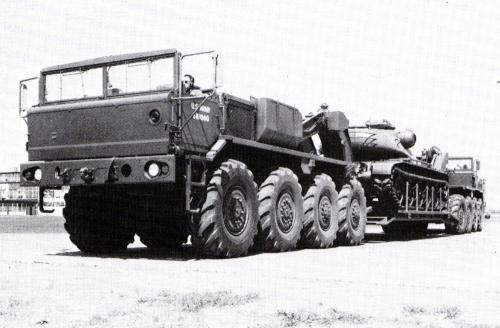
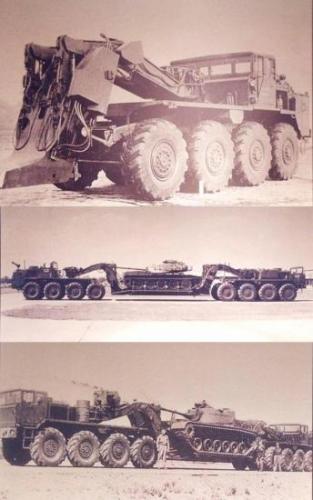
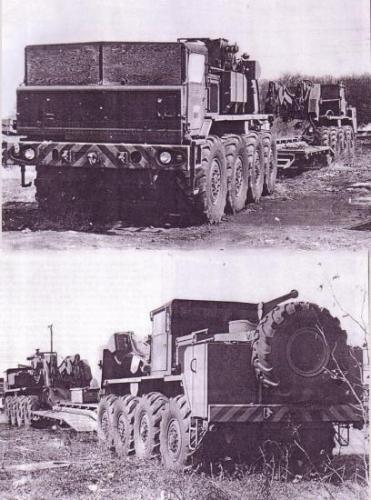
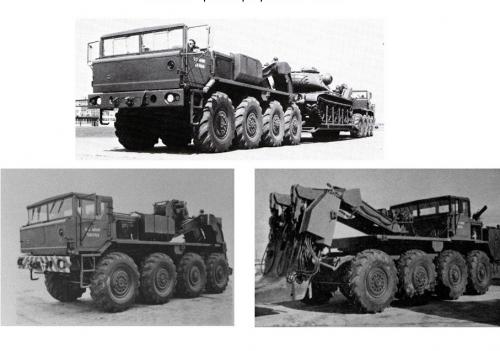
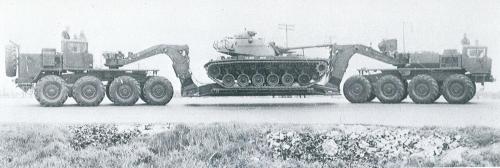
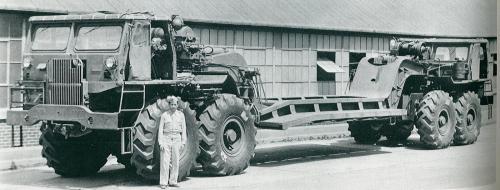
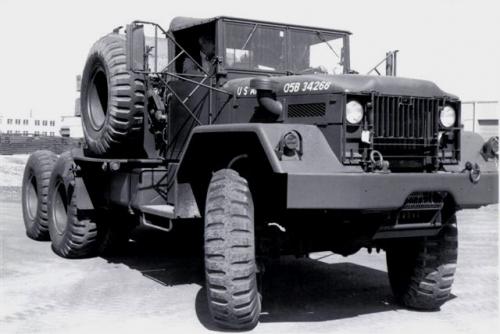
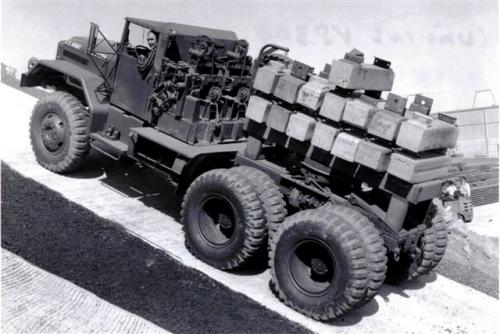
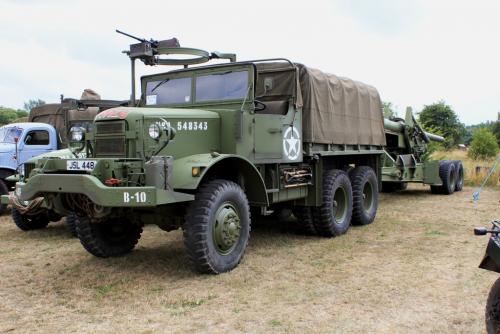
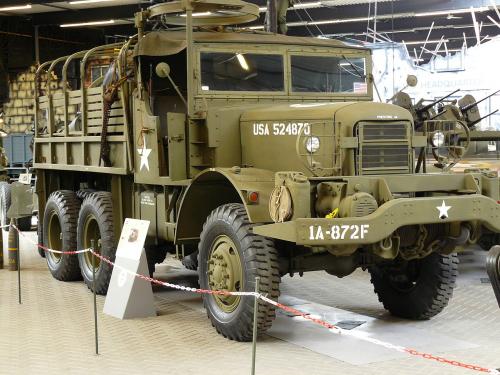
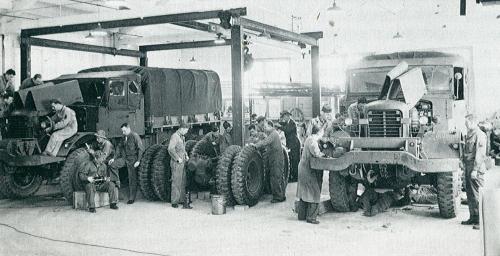
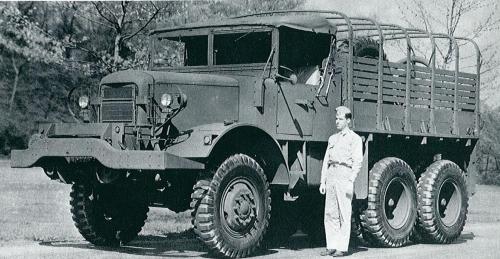
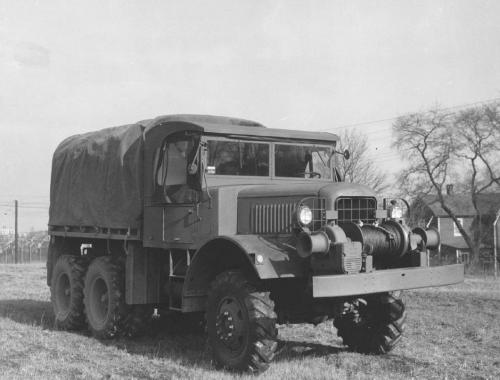
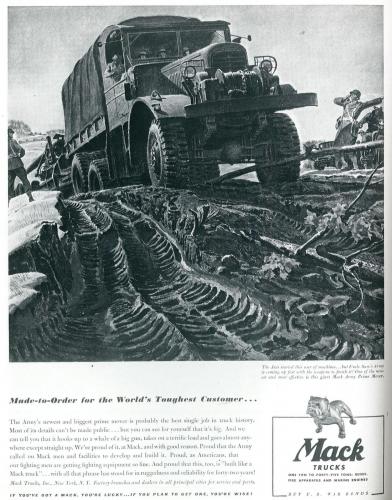
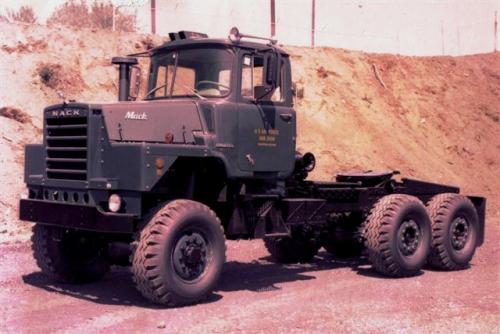
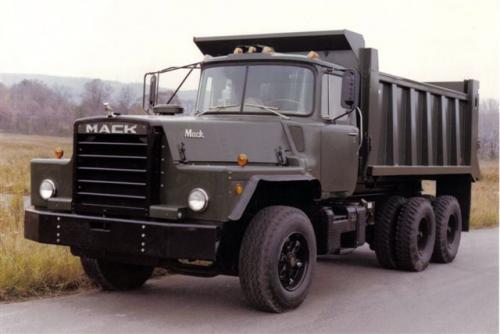
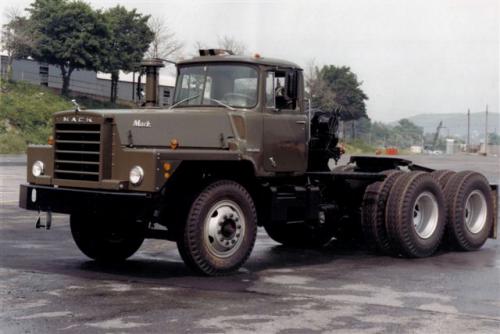
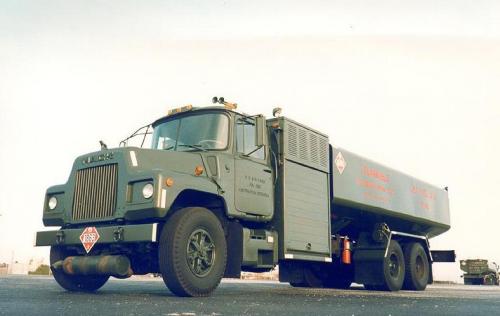
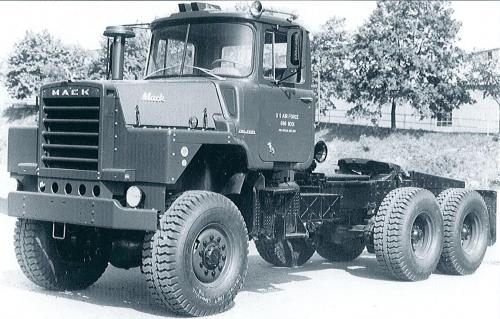
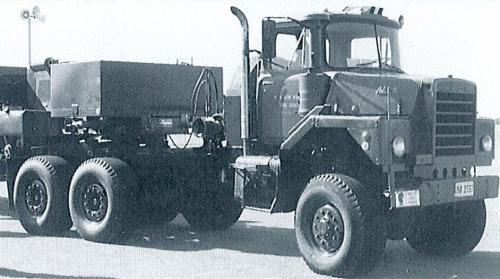
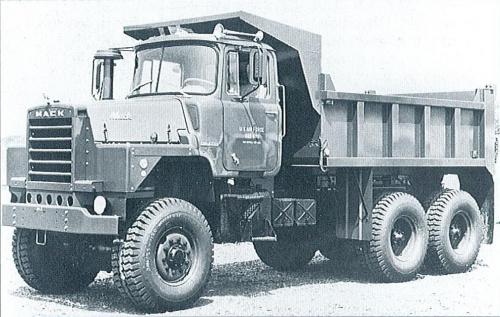
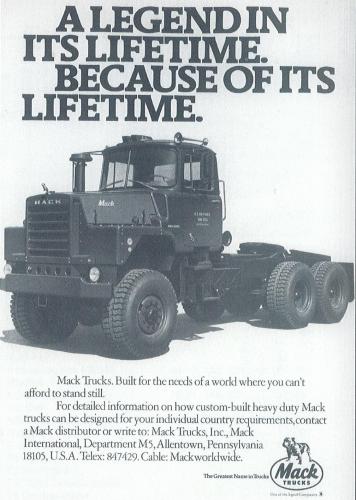
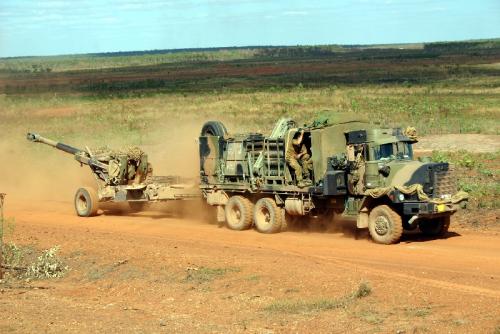
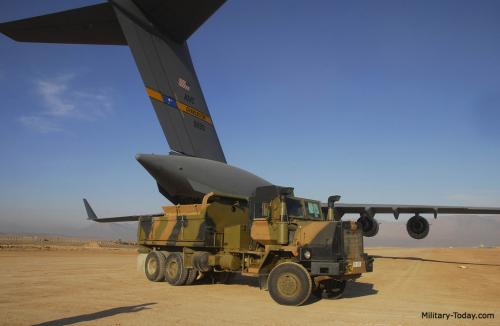
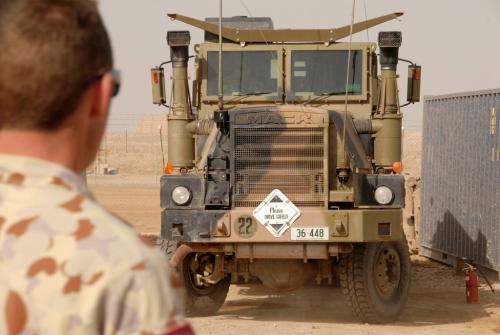
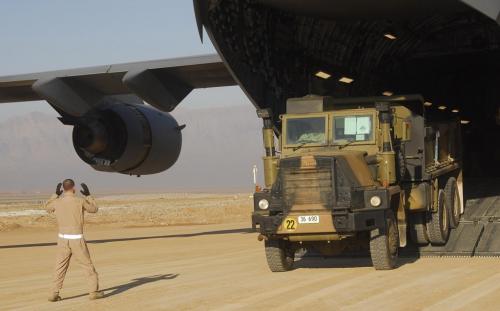
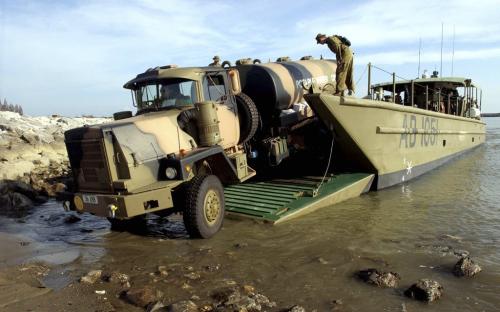
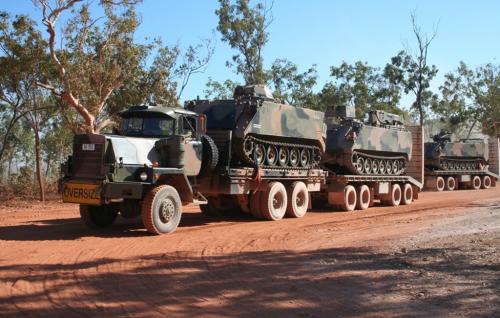
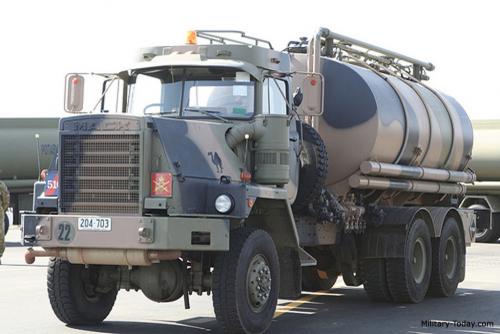
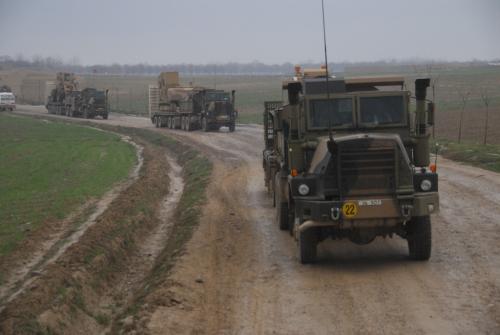
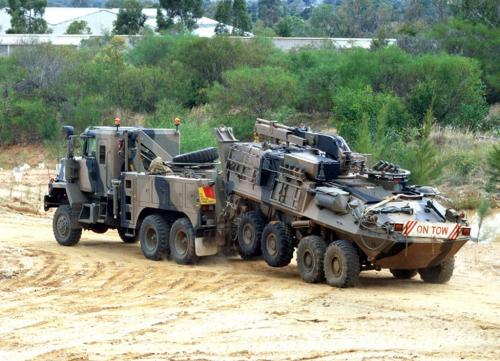
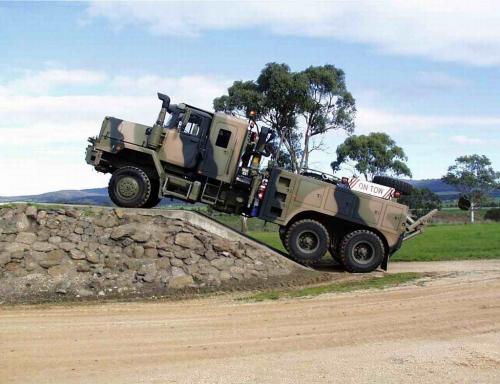
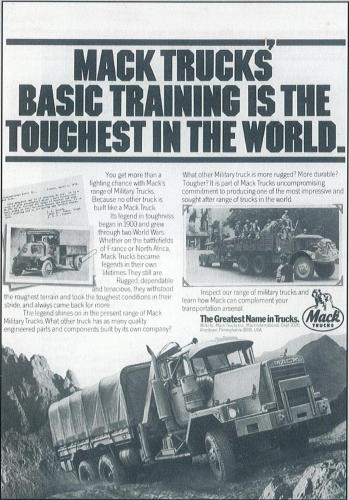
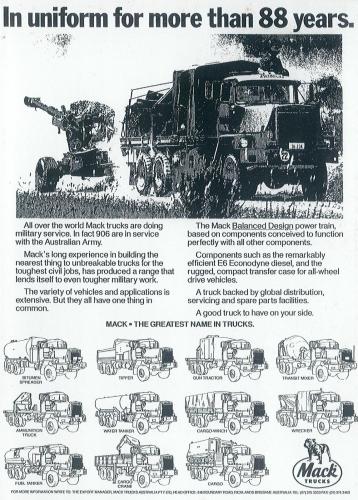
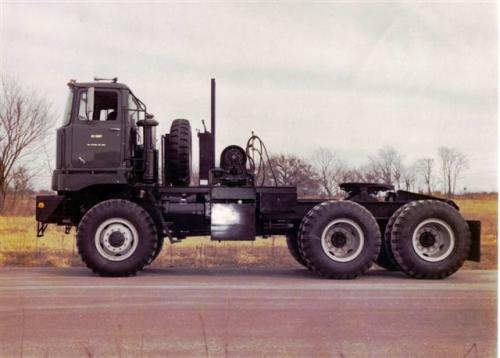
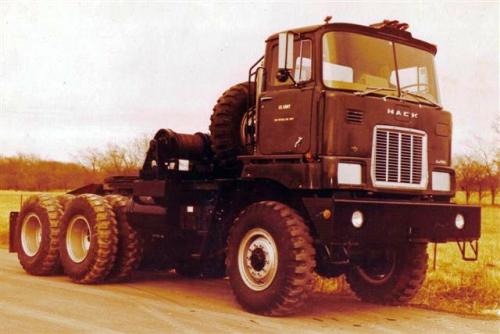
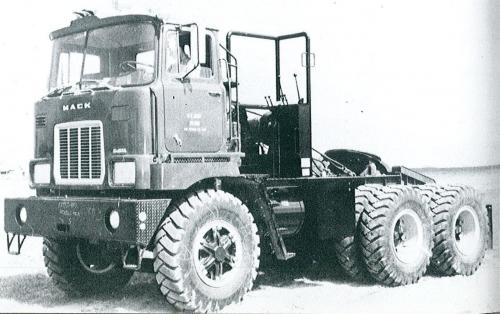
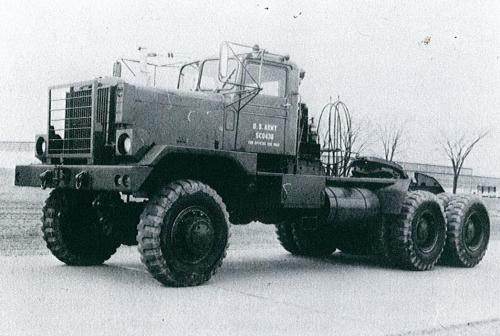
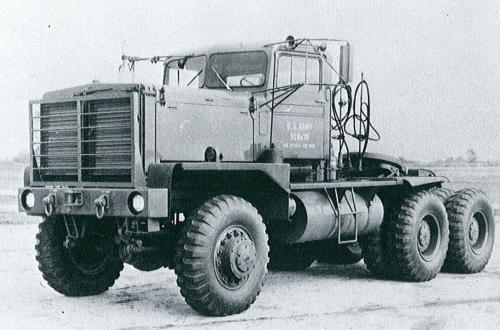
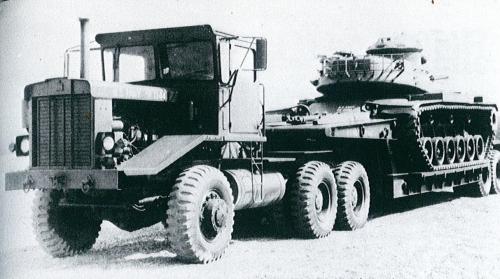
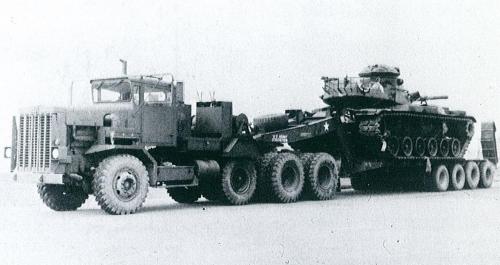
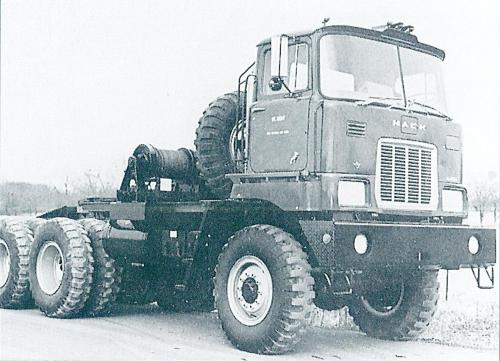
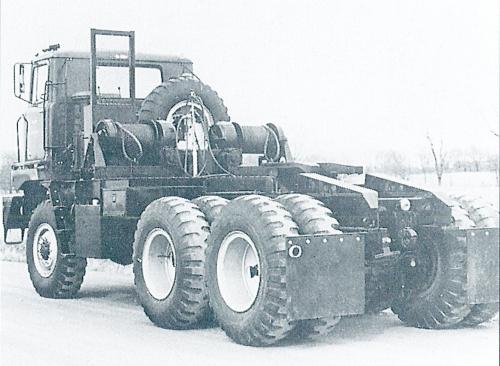
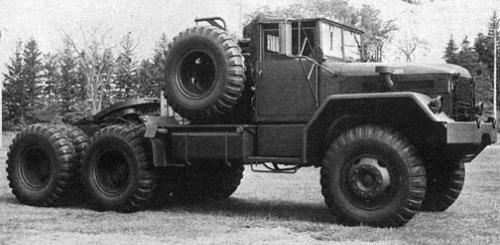

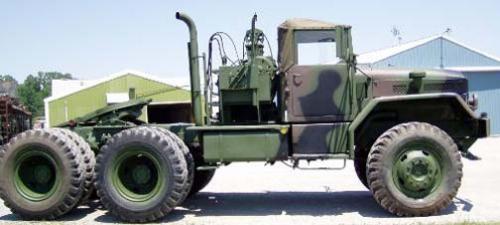
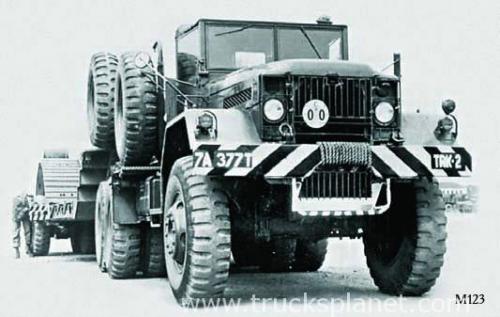
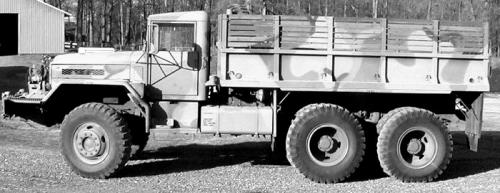
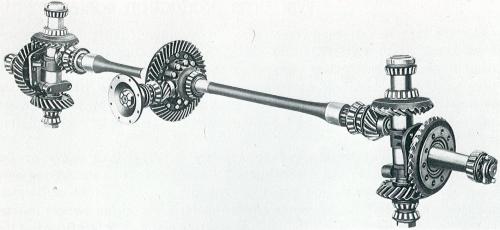
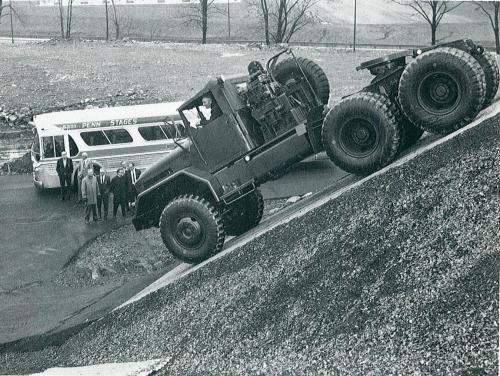
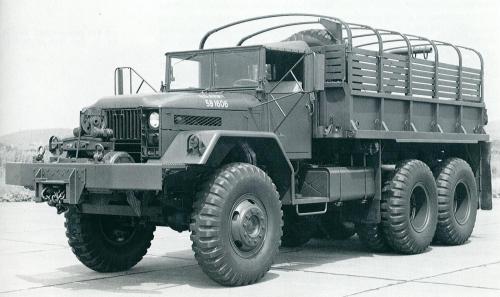
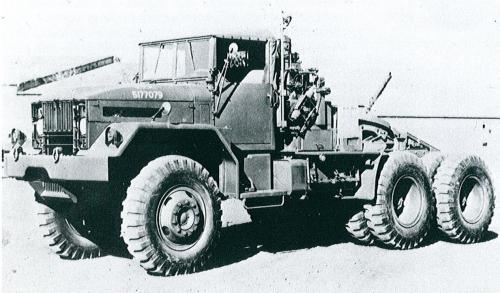
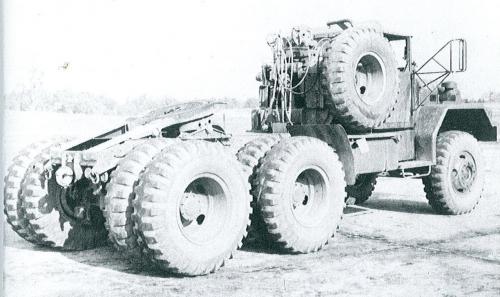
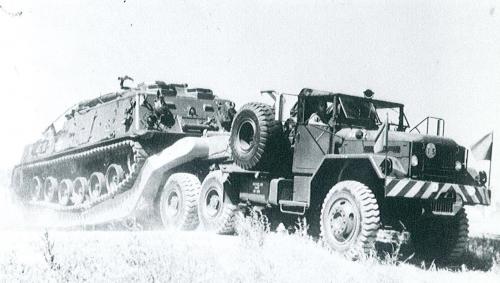
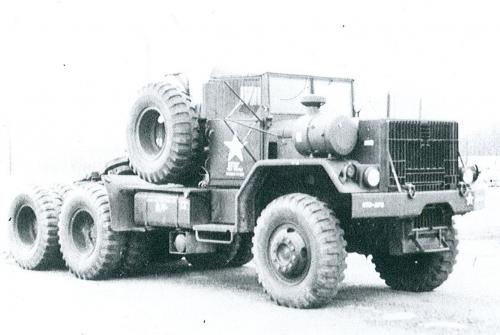
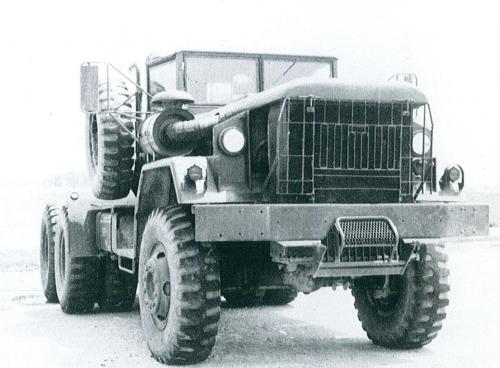
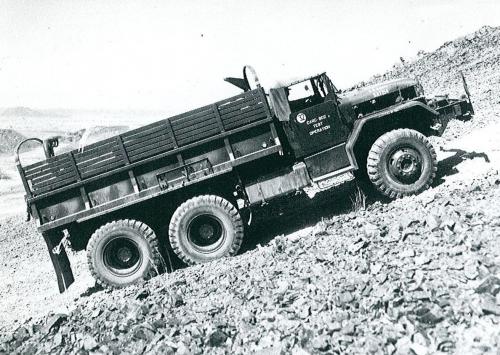

Rotting Superliner
in Antique and Classic Mack Trucks General Discussion
Posted
But, the wheelbase of that (Hayward production) Super-Liner looks very short, definitely an east coast spec in those days and a less comfortable ride.
The best thing to ever happen to the Super-Liner was when production moved from Hayward to Macungie and Mack decided to build it on the same advanced frame of the Mack MH model Ultra-Liner. It was redesignated "RWI". That frame was the best in the industry at the time. Handling was superb. This frame was designed to twist and bend (unlike the traditionally rigid frames), and yet offer traditional Mack strength and longevity. AND, the MH frame adoption resulted in the steering gear being mounted on the frame. On the Hayward RWL/RWS, the steering gear was stupidly mounted on the front axle (same as the Cruise-Liner) where road shock resulted in shortened steering gear life and wallowed out pitman arm mounting splines.
The one thing I liked about Hayward production Macks was the paint. Hayward used Sherwin-Williams, while Macungie used Dupont. At that time, I felt the Sherwin-Williams automotive paint finishes (as witnessed in Mack production) was far superior.